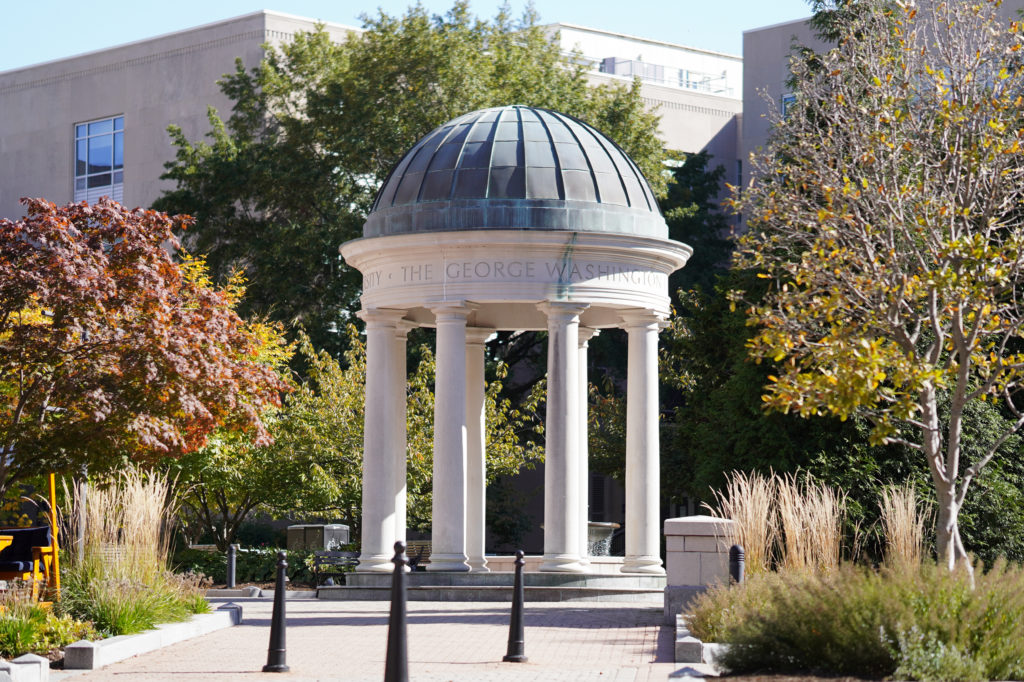The University’s endowment growth for fiscal year 2020 is consistent with its peer institutions but falls slightly below the national average.
GW’s endowment increased in value by 1.35 percent in FY 2020, which ran from July 1, 2019, through June 30, 2020, ticking up from $1.779 billion to $1.803 billion. In an analysis of 705 institutions that included GW’s peers, the National Association of College and University Business Officers found that the University’s endowment return was slightly lower than the national average of 1.8 percent.
The report also states that most schools have targeted an annual increase of 7.5 percent on their endowments, and next year’s data will shed light on how universities performed during most of the pandemic. During FY 2019, the national average increase was 5.3 percent, but GW’s endowment value decreased by 1.13 percent that year.
“With data through mid-year 2020, the study captures the first several months of the higher education community’s experiences with the global COVID-19 pandemic,” Susan Whealler Johnston, the president and CEO of the NACUBO, said in a press release. “In next year’s report, the fiscal year 2021 findings will help complete the picture of how institutions and their endowments coped.”
Officials vowed to not tap into GW’s endowment to weather a $180 million annual budget gap this year, instead making cuts in areas like employee travel and hirings.
Of GW’s 12 peer schools, the University saw more significant growth than New York, Northeastern, Syracuse, Tufts, Tulane and Wake Forest universities and the universities of Pittsburgh and Rochester.
The University of Miami and Boston University had the best performance with increases of 5.3 percent. Other peer institutions like Pitt and Wake Forest saw their endowments decrease by 3.2 percent and 1.8 percent, respectively.
John Longo, a professor of finance at Rutgers University and the chief investment officer at the wealth management firm Beacon Trust, said universities’ endowment growth may be explained by factors like a strong governmental fiscal and monetary response to the pandemic as well as speedy vaccine development that happened toward the end of the fiscal year.
“If you told me that we would have the worst pandemic since the early 1900s and the world economy would have a deep recession, I would have been very surprised that most endowments wound up in positive territory,” Longo said.
Robert Kelchen, an associate professor of higher education at Seton Hall University, said he was not surprised that most universities saw their endowments grow given recent market trends. He said the stock market’s strong performance last year helped many universities see an increase in their endowments.
“If a college mostly invested in the stock market, they did better than if they were invested in hedge funds that were in areas that went down,” Kelchen said.
Universities paid out about 4.5 percent of their endowment value in FY 2020 on average, a slight increase from 4.4 percent in FY 2019. Officials took a payout from the endowment of $90.2 million – or 5 percent – during the past fiscal year.
“Right now is a good reason to spend more than normally,” Kelchen said. “Because the pandemic has a fairly clear end date at this point. It was different than last year when we didn’t know how long this would last and colleges had to save their resources. Now spending a little bit more is OK because you have a sense of when things will get back to normal.”
Ken Redd, the director of research and policy analysis at the National Association of College and University Business Officers, said most universities seeing an increase in their endowments shows their true purpose of providing long-term financial stability and support.
“Endowments are long-term assets that are designed to protect universities and to provide support for students in good times and bad times,” Redd said.
Redd said endowments are just one part of university finances, but universities’ other funding sources can change their financial picture.
“Their ranking on a list doesn’t necessarily equate to quality or value of service,” Redd said. “It’s just a ranking. University finances are much more complex than what one would see in any of our tables.”







